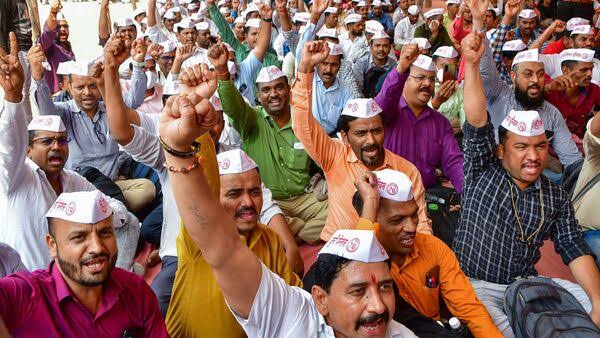India. Balancing Old and New Pension Systems: Neglected Pensioners and PFRDA’s Role
The ongoing debate surrounding the Old Pension Scheme (OPS) and the New Pension System (NPS) must not overlook the most affected group – the pensioners. While political parties, economists, and think tanks engage in discussions about the advantages and risks of each system, elderly individuals relying on these pensions continue to be forgotten.
The OPS has a long history dating back to British Colonial Rule in India, initially introduced in 1881. It has evolved over the years, extending its coverage to government officials, public sector employees, and Union and State Government workers. This scheme provided a pension based on an employee’s last drawn salary, with no contribution required from the employee. Additionally, it offered indexation benefits to account for inflation.
However, by the late 1990s, it became clear that this Defined-Benefit Scheme was financially unsustainable, necessitating a reform in India’s pension system. A committee chaired by former SEBI and UTI Chairman Dr. S.A. Dave proposed an alternative known as the New Pension System or National Pension System, which aimed for fiscal sustainability. This Defined Contribution System required both employees and employers to contribute to the pension corpus.
The NPS was introduced in 2004, vide a Central Government notification dated 22.12.2003, for new recruits in central government services and gradually expanded its coverage to other entities and individuals. Currently, around 1.7 crore citizens, including 84 lakh state and central government employees, have subscribed to this system. Pension Fund Regulatory and Development Authority Act, 2013 was also passed to establish a permanent regulator, Pension Fund Regulatory and Development Authority (PFRDA), and subsume all the notifications related to NPS to provide statutory backing to the scheme.
However, after two decades of implementation, it has become evident that the pension corpus created under the NPS is inadequate to meet living expenses and provide sufficient post-retirement income security. This issue has been capitalized upon by many political parties and state governments, supporting the restoration of the OPS.
While the NPS reduced the fiscal burden on the government, it resulted in lower pension amounts for employees compared to the OPS. The expected annuity levels under the NPS range from 34% to 42% of the last drawn salary, according to recent articles by T. S. Vaidyanathan. Furthermore, the annuity offered under the NPS remains fixed throughout the pensioner’s lifetime, leading to a decrease in real value over time due to inflation.
Economists argue that the NPS benefits employees who remain in the system for a long time, consistently contribute, and refrain from withdrawing from the corpus before retirement. However, they often overlook the uncertainties and human aspects of the system, such as late entry or early exit from government employment, delayed contributions from government departments, and market performance affecting the corpus accumulation. Studies in behavioural economics have shown that people prefer certainty over uncertainty, even if it means lower gains.
The issue of pension adequacy has gained prominence as India’s aging population is expected to rise in the coming decade. Therefore, it is crucial to adopt a bipartisan approach to formulate an NPS that is financially sustainable and meets the needs of pensioners. Revisiting the 2003 report that suggested a hybrid of Defined Contribution and Defined Benefit Systems may provide valuable insights. While the Central Government has introduced some rules to address employee concerns and have established a committee to relook the structure of the scheme, state governments like Rajasthan, Chhattisgarh, Himachal Pradesh, and Jharkhand have chosen to restore the OPS.
In terms of legal jurisdiction, the Indian Constitution classifies “union pensions” (pensions paid by the Government of India or from the Consolidated Fund of India) under the Union List (List I). “State pensions” (pensions paid by the State or from the Consolidated Fund of the State), are listed in the State List (List II). Additionally, “old age pensions” are listed in the Concurrent List (List III). This division of lists implies that both the central government and state governments have the authority to pass laws and establish policies regarding pensions for their respective employees.
However, this arrangement poses a challenge because the NPS is regulated and administered by the Pension Fund Regulatory and Development Authority (PFRDA) under the PFRDA Act of 2013. The PFRDA, as an all-India central statutory body, formulates rules, regulations, and guidelines for the NPS. It also oversees the registration and regulation of Pension Fund Managers (PFMs), Custodians, and other entities involved in the NPS.
While state governments have implemented the NPS for their employees through an agreement with the NPS Trust, a private trust with the PFRDA as its settlor, there is a lack of consensus among states. Unlike the Goods and Services Tax (GST) Council, which makes decisions through the consensus of both the central and state governments, the NPS and NPS Trust are independently regulated by the PFRDA. The PFRDA’s board members are appointed by the Central Government. Consequently, different state governments have adopted varying positions regarding the adoption date of the NPS, the percentage of contribution, and the coverage of autonomous bodies. This divergent approach by states leaves the regulator and market intermediaries perplexed, creating uncertainty surrounding the promotion, protection, and regulation of the NPS.
Moreover, this situation has resulted in legal challenges to the PFRDA Act itself by various employee groups in different high courts, including at the Bombay High Court, Kerala High Court, and Madras High Court.
As elections approach in different states, the pension issue will likely remain prominent. It is time to move away from the Old versus New fight and develop a system that incorporates the strengths of both. A system that prioritizes the needs of our elders, who have dedicated decades of service to the country, while addressing political and economic considerations. The Union Government’s launch of the ‘Atal Pension Yojana,’ a hybrid scheme, indicates the potential for such a progressive approach.
Sumit Agrawal and Pratham Darad, are regulatory lawyers from Regstreet Law Advisors and former officers of SEBI and PFRDA, respectively.
Read more @barandbench











